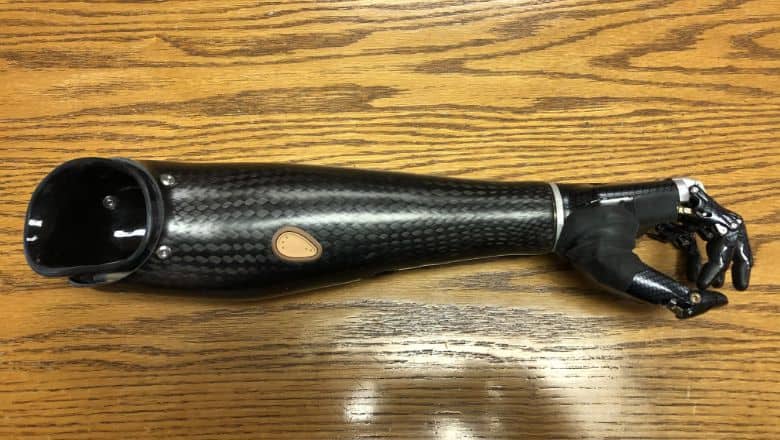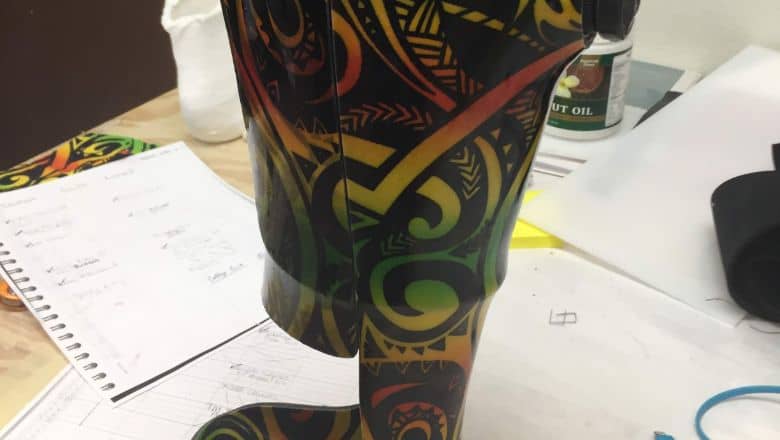Choosing the right prosthetic device is a deeply personal decision, shaped by your lifestyle, goals, and comfort needs. At Evolve Prosthetics & Orthotics in Las Vegas, we help patients navigate these decisions by offering state-of-the-art options tailored to each individual. One of the most common questions we hear is: What’s the difference between bionic limbs and traditional prosthetics—and which one is better for me? Let’s walk you through the key differences so you can make an informed choice.
Types Of Prosthetics – Mobility That Fits You
Both traditional and bionic prosthetic limbs are generally categorized by limb type and amputation level. Each type is designed to meet different physical demands and lifestyle needs.
Lower-Limb Prosthetics
- Below-Knee (Transtibial)
- Above-Knee (Transfemoral)
Upper-Limb Prosthetics
Function-Driven Prosthetic Options – Matching Limbs To Lifestyles
Beyond limb type and level of amputation, prosthetics are also categorized by how they function in daily life. Not everyone requires the same features—a person navigating uneven job sites has different needs than someone focused on household mobility. That’s why choosing a prosthesis tailored to your activity level is just as important as the device’s fit and technology.
- Basic Mobility Devices: For walking, standing, and everyday movement with a focus on comfort and stability.
- Activity-Specific Prosthetics: Engineered for sports and high-impact movement like running or biking.
- Occupational Prosthetics: Tailored for job-specific tasks with specialized attachments or tools.
- Cosmetic Prosthetics: Prioritize appearance with lifelike materials and custom skin-tone matching.
- Hybrid Prosthetics: Blend function and appearance for users seeking both utility and aesthetics.
- Adaptive Recreational Prosthetics: Made for hobbies like swimming, skiing, or playing instruments.
What Are Traditional Prosthetic Limbs?
Traditional prosthetics are designed for functionality and durability. They typically rely on mechanical movement and body-powered systems—such as cables, harnesses, or manual control—to function. These devices are often more affordable, easier to maintain, and ideal for individuals who want a straightforward, dependable solution.
- Simplicity & Ease Of Use
- Lower Cost & Fewer Repairs
- Proven, Time-Tested Designs
- Effective For Daily Living & Moderate Activity Levels
If you’re looking for a no-frills, functional option with minimal maintenance, a traditional prosthetic limb may be the right fit.
Potential Limitations Of Traditional Prosthetic Limbs
While traditional prosthetic limbs remain a trusted and effective solution for many, they do come with some limitations, especially for individuals seeking more dynamic movement or responsive control. Because they often rely on body-powered mechanics, users may experience restricted motion range and less intuitive control, particularly in upper-limb devices.
- Less Natural Movement Or Gait
- More Physical Effort Required For Motion
- Limited Adaptability To Changing Environments
- Fewer Customization Options
If you have demanding mobility needs or are pursuing high-performance goals, a traditional prosthesis may not provide the precision or comfort you’re looking for.
Body-Powered Vs. Bionic Limbs – What’s the Difference?
A key distinction in the prosthetic comparison is how the device is powered. Understanding the two main categories will help you align your goals with the right technology.
Body-Powered Prosthetics
Use harnesses, cables, or residual limb motion to manually control movement. These are typically lower cost and more rugged, making them a common choice for users prioritizing function and simplicity.
Bionic Limbs & Myoelectric Prosthetics
These rely on electrical signals from muscles to power movement. Combined with sensors and microprocessor technology, bionic arms and legs can adapt to terrain, pressure, and intention, resulting in smoother, more natural movement.
Exploring Advanced Prosthetic Technologies
The field of prosthetics has seen remarkable advancements in recent years, transforming from purely mechanical devices into intelligent systems that closely mimic natural human movement. These high-tech prosthetics are engineered to enhance not only mobility but also precision, comfort, and adaptability to real-world environments.
Whether you’re an active individual returning to sports or someone focused on regaining independence in everyday activities, today’s prosthetic technologies offer tailored features to support your lifestyle.
- Microprocessor Knees: Sensors detect gait and terrain to adjust motion in real time.
- Smart Prosthetics: AI-driven components that learn user behavior.
- Myoelectric Control: Electrodes pick up muscle signals to power hand or arm movement.
- Vacuum Suspension Systems: Ensure a secure, comfortable fit for improved limb control.
- Robotic & Bionic Limb Technology: Combine multiple systems for responsive, dynamic movement.
While not every patient needs every feature, understanding the available technology can help guide your decision and ensure you receive the most effective and empowering device for your goals.
Benefits Of Bionic Prosthetics
From smart sensors that respond to muscle signals to adaptive joints that react to changing terrain, the innovation behind these devices is reshaping what’s possible after limb loss. You now have access to personalized solutions that can improve gait, reduce energy expenditure, and restore control to a level that was once unimaginable.
- Enhanced Mobility & Responsiveness
- Customizable Features & Software Upgrades
- Natural Motion & Gait Correction
- Greater Comfort & Reduced Fatigue
From bionic arm technology to microprocessor knees, these high-tech prosthetics are designed to support active lifestyles and restore function in ways traditional devices cannot.
What To Consider Before Choosing Bionic Limbs
Bionic limbs and smart prosthetics offer powerful advantages—but they’re not the right fit for everyone. These devices involve complex technology, which may require more frequent maintenance, regular charging, and careful handling. Some users may face a learning curve while adapting to myoelectric systems or microprocessor components.
- Higher Upfront Cost & Insurance Limitations
- Sensitivity To Moisture Or Rough Use
- Need For Periodic Software Or Firmware Updates
- Potential Difficulty For Individuals With Limited Residual Muscle Control
While these challenges are manageable, it’s important to work closely with a prosthetist who understands your goals and can ensure proper training, support, and follow-up care.
Understanding The Cost Of Bionic Limbs
One of the most common concerns when considering bionic limbs is the price. While high-tech prosthetics come with advanced features, they often involve higher upfront costs, specialized fittings, and more frequent adjustments. However, the potential for improved independence and functionality can make them a worthwhile investment.
We guide patients through the financial aspects and offer free consultations to discuss the best solutions within your budget.
- The Complexity Of The Technology (E.g., Myoelectric Vs. Microprocessor)
- Customization & Add-On Features
- Insurance Coverage & Reimbursement
Comparing Functionality – Bionic Vs. Traditional
The biggest difference in the bionic limbs vs traditional prosthetics debate comes down to functionality and precision. While traditional limbs offer durability and reliability, bionic options provide a greater range of motion, smoother joint control, and real-time feedback through sensors. This can dramatically improve balance and quality of life, especially for above-knee or upper-limb amputees.
Questions To Address With Your Prosthetist
- Activity Level: Are you active or prefer minimal movement?
- Lifestyle: Do you require fine motor control for work or hobbies?
- Goals: Are aesthetics, natural movement, or cost most important to you?
Making The Right Prosthetic Choice For Your Daily Life
Selecting the right prosthetic limb involves more than just deciding between technology levels—it’s about how that device will integrate into your daily life. We help patients evaluate a range of important factors to ensure their choice meets both functional needs and long-term goals.
- Daily Use & Simplicity
- Learning Curve
- Comfort & Fit
- Upkeep & Repairs
- Quality Of Life Benefits
- Emotional Comfort
- Control & Coordination
- Power & Reliability
- Technical Know-How
- Environmental Durability
- Age Suitability
No two prosthetic journeys are the same. That’s why we work closely with you to assess not only your medical needs, but also your lifestyle, comfort, and personal goals.
Personalized Prosthetic Solutions For Your Needs
Ultimately, the decision between bionic vs. traditional prosthetics depends on what fits your life, not just your limb. You may thrive with a reliable traditional device, or benefit greatly from the responsiveness of robotic or smart systems. Here are just a few ways we make your choice easier.
- A Wide Selection Of Advanced Prosthetics & Traditional Options
- Experience With Myoelectric Prosthetics, Microprocessor Knees & More
- Free Lifetime Fittings & Adjustments
- A Compassionate, Patient-First Approach To Care
We assess your goals, lifestyle, and physical requirements to help determine which type of device will give you the best balance of comfort, performance, and durability. Whether you’re a casual walker, a weekend warrior, or a competitive athlete, there’s a prosthetic solution designed to support your unique pace of life.
Discover Advanced Prosthetics In Las Vegas – Book Your Free Consultation Today
Whether you’re exploring your first prosthesis or considering an upgrade to bionic limb technology, Evolve Prosthetics & Orthotics is here to help. We specialize in both traditional and smart prosthetics tailored to your lifestyle. Located right here in Las Vegas, our team is ready to guide you through every step—from consultation to fitting and beyond.
Ready to take the next step in your prosthetic journey? Contact Evolve Prosthetics & Orthotics in Las Vegas for your free, no-obligation consultation today.




